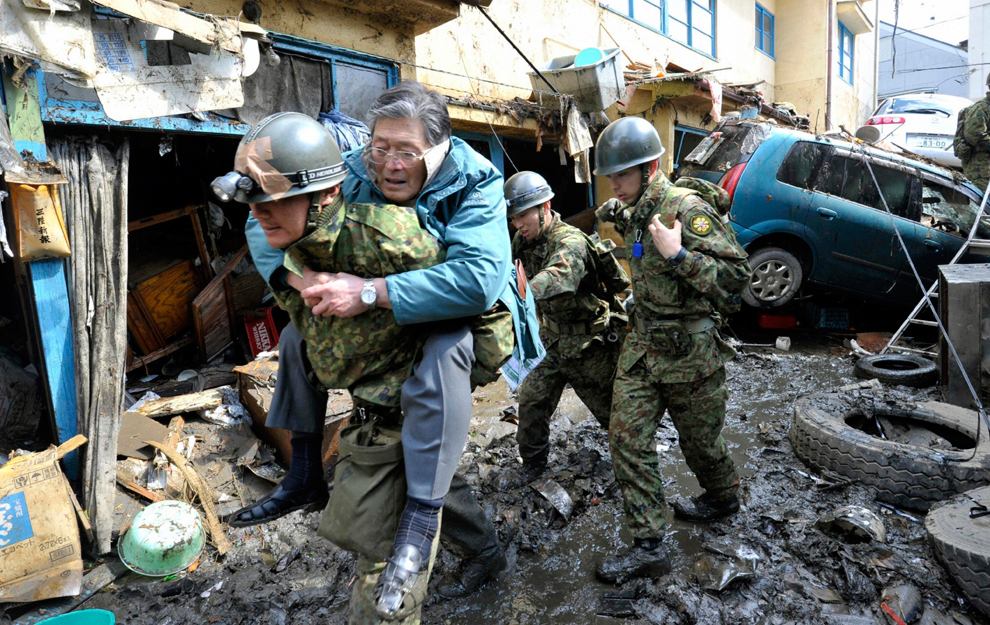

For several days, first-year international student Eri Koyano could not contact her grandparents. She said she felt helpless sitting on the other side of the world, waiting to hear if her family and friends in her native Japan were alive.
Although Koyano was able to confirm that the people she cared about had survived the earthquake that recently rocked Japan, she said hearing of the devastation in her homeland seemed surreal.
“The most important people in my life are there and I asked what I was doing here,” she said. “But I have to try to do what I can from where I am.”
Now, Koyano, Japanese students, organizations and faculty members are working to raise awareness and urge the community to contribute to relief efforts for the country.
An 8.9 magnitude earthquake hit the Pacific Ocean near north eastern Japan several days ago, causing damage with blackouts, fire and a tsunami. With new hazards from damaged nuclear reactors that were leaking radiation causing more damage, government officials said the death rate continues to rise as rescuers work to find thousands in the destruction.
Assistant Professor of Japanese Dylan McGee, whose wife is from Japan, said the “nuclear situation” is very troubling for what he said was the more rural area that was hardest hit. He also said his family and friends in the country reported that they were experiencing “massive” aftershocks hitting magnitudes of 6.8.
However, McGee said the tragedies caused by natural disasters have and will bring the Japanese people together.
“There is a great sense of solidarity among people in the region,” he said.
Koyano agreed, saying that the Japanese students at SUNY New Paltz feel more patriotic and that they need to come together for their country. She said this is why they have begun to organize fundraising efforts on campus and locally.
Koyano said she had the idea of creating something to raise money after her sister, a graphic design student, made posters to raise awareness at her American school. She said the other Japanese students also wanted to start a campaign to help the nation.
“It’s not about who started it all. It’s about us all coming together to help our country in any way that we can,” she said.
Students will begin selling red and white plastic bracelets the Monday after spring break that say “pray for Japan,” with proceeds benefitting the Red Cross. Koyano said the organizers will be selling the $3 bracelets in front of Student Union 100 from 2 to 4 p.m. and 4:30 to 7 p.m.
Koyano said there will also be donation boxes placed at local businesses like Paul’s Kitchen and other locations.
The Japanese student organizers have also been reaching out to clubs, such as the fundraising group, Circle K. Koyano said they may also look to sell bracelets and raise money at events hosted by different student organizations.
According to McGee, other student groups have also begun working to organize charity campaigns. He said students in the Japanese Club, Chinese Student Association and the Asian Studies program will be selling T-shirts, and local businesses have been contacted to provide food for possible fund raising events in the future.
Faculty will also be encouraging the community to donate to charities like the Japan Society at a multidisciplinary panel Thursday.
In his intermediate Japanese class, McGee said students raised different types of questions about the disaster. Therefore, he said professors from three different disciplines – Japanese, geological sciences and economics – will be speaking at the panel to offer information about the implications of the disaster for Japan from different perspectives.
James Halpern and Karla Vermeulen of the Institute for Disaster Mental Health will also speak, in addition to retired nuclear engineer for Indian Point Nuclear Power Plant, Motoharu Imai.
McGee said providing information to the community about the struggles of the Japanese people in light of the disaster is one way he felt he could help.
“Being here, it is easy to feel sort of helpless,” he said. “At the very least, we can work to inform.”
The panel, “Disaster in Japan,” will be held from 3 to 5:30 p.m. in Lecture Center 102.
